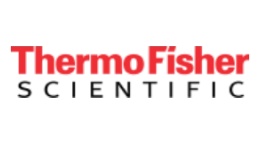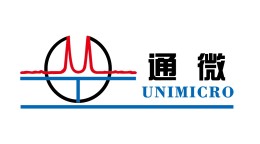方案详情文
智能文字提取功能测试中
ExperimentalTable 1B. Apparatus/instruments. 4 Determination of 17 Mycotoxins inCereals and Cereal Based FoodUsing Liquid Chromatography-TripleQuadrupole Mass Spectrometry Katharina von Bargen, Ebru Sarikaya, and Michal Godula Thermo Fisher Scientific, Special Solutions Center Europe, Dreieich, Germany Key Words Commission Regulation 1881/2006/EC, mycotoxin detectionand analysis, cereals, LC-MS/MS, UHPLC,UltiMate 3000,TSQ Endura, TraceFinder Goal To evaluate a dilute-and-shoot approach followed byLC-MS/MS for the analysis of the mycotoxins legislated bythe EU as well as some additional mycotoxins of currentinterest. Introduction Mycotoxins are potentially toxic secondary metabolitesproduced by different species of fungi. The main relevantspecies occurring on cereals are Penicillium sp., Fusariumsp. and Aspergillus sp. The fungal contamination caneither occur on the field or during storage. Estimationsare given that approximately 25% of all crops arecontaminated with mycotoxins. The type and amount ofcontamination varies with climate conditions. As thecontamination can result in serious health issues, myco-toxin analysis is an important part of routine foodcontrol.1,2 For cereals and baby food, the European Union (EU)legislation currently sets maximum levels (ML) for thefollowing mycotoxins: deoxynivalenol, zearalenone, T-2toxin, HT-2 toxin, fumonisin B , fumonisin B,, aflatoxinB, B, G, G,and ochratoxin A.3-6 The European FoodSafety Authority (EFSA) is continuously examining theoccurrence and health risks of further mycotoxins. Oneof the main current topics of interest is the acetylateddeoxynivalenol metabolites and deoxynivalenol-3-gluco-side. For some mycotoxins, e.g. sterigmatocystin, which isrelated to aflatoxins,EFSA could not determine the riskdue to lack of data.s This application note presents a simple and fastmulti-mycotoxin method that covers the legislatedmycotoxins as well as 3-and 15-acetyl-deoxynivalenol,deoxynivalenol-3-glucoside, nivalenol, its acetyl derivativefusarenon X and sterigmatocystin. The sample prepara-tion follows a simple dilute-and-shoot approach afterextraction of cereals and maize with a mixture ofacetonitrile/water. The analysis was carried out on aThermo ScientificUltiMate" 3000 LC system coupled toa Thermo Scientific TSQ Enduratriple quadrupolemass spectrometer. The method was evaluated regardingthe LOD/LOQ limits, linearity and matrix effects. Overview The workflow is depicted in Figure 1. Blank sampleswere homogenized and extracted with an acetonitrile(ACN)/water mixture and diluted prior to injection intothe LC-MS/MS system. The mycotoxins were identifiedbased on retention time and ion-ratio confirmation usingselected reaction monitoring (SRM) of characteristictransition ions. Variations in the ratio up to 20% wereaccepted. Matrix-matched standard solutions wereprepared as well as calibration solutions in solvent toevaluate the performance criteria of the method. Figure 1. Method overview. Method supplies In Tables 1A through 1D the reagents, apparatus,consumables and glassware used and their sourceincluding Thermo Fisher Scientific part numbers, whereappropriate, are listed. Table 1A. Reagents. Reagents Part No. (Source) Acetonitrile, HPLC Grade A998 (Fisher Scientific) Ammonium Acetate, 5 M, BioUltra 09691 (Sigma Aldrich) Acetic Acid, Glacial, HPLC-Grade A35-500 (Fisher Scientific) Methanol, OptimaLC/MS grade A456 (Fisher Scientific) Purified Water Obtained from Thermo ScientificBarnsteadM EASYpurell water system Apparatus/Instruments Part No.(Source) Fisher precision balance Fisher Scientific Sartorius analytical balance ME235S (Fisher Scientific) Thermo Scientific BarnsteadEASYpure Il water Thermo Scientific Vortex shaker Fisher Scientific Vortex universal cap Fisher Scientific Horizontal shaker Fisher Scientific Horizontal shaker plate Fisher Scientific Centrifuge, Thermo ScientificHeraeusMultifuge x3 Fisher Scientific WARING COMMERCIAL LaboratoryBlender Fisher Scientific TSQ Endura triple quadrupole massspectrometer Thermo Scientific UltiMate 3000 Basic AutomatedSystem Thermo Scientific Table 1C. Consumables. Consumables Part No.(Fisher Scientific) Thermo Scientific AccucoreC18LC column 100×2.1 mm, 2.6 um 17126102130 LC vials (amber) 60180560 LC screw caps 60180514 Pipette Thermo ScientificFinnpipetteTMNovus 100-1000 uL 46200600 Pipette Finnpipette Novus 30-300 uL 46200500 Pipette Finnpipette Novus 1-10 pL 46200100 Pipette Finnpipette Novus 10-100 pL 46200400 Pipette Finnpipette F2 0.5-5 mL 4642100 Pipette Finnpipette F2 1-10 mL 4642110 Pipette holder 6 manual pipettes 9420290 Pipette holder for Finnpipette Novus 9420360 Pipette tips 0.5-250 pL,500/box 9400250 Pipette tips 5-300 pL, 10×96/rack 9401250 Pipette tips 0.5 -5 mL, 75/box 9402050 Pipette tips 100-1000 pL,200/box 9401070 Pipette tips 1-10 mL, 40/box 9402150 Pipette tips 0.2-10 pL 10x 96/rack 9400300 Pipette Pasteur soda lime glass 150 mm Pipette suction device Spatula, 18/8 steel Vial rack (2 mL) Centrifuge tube rack Polypropylene (PP) tubes tubes, 50 mL,250 pack Disposable syringe filters (0.2 um, PTFE) Glassware (Fisher Scientific) Volumetric flask, 1 mL Volumetric flask, 2 mL 4 mL screw cap vial Caps for 4 mL screw cap vial 1000 mL bottle Volumetric pipette, 20 mL The following mycotoxin standards were purchased fromFluka: ·Zearalenone, fusarenon X, deoxynivalenol, HT-2 toxin,T-2 toxin: 100 pg/mL in ACN Doxynivalenol-3-gluco-side: 50 pg/mL in ACN ·Mixture of fumonisin B +B : 50 ug/mL in ACN/watereach, trichothecene B mixture containing deoxynivale-nol, nivalenol, 3-acetyldeoxynivalenol,15-acetyl-deoxynivalenol: 100 pg/mL in ACN each The following standards were purchased from RomerLabs: ·Nivalenol: 100 pg/mL in ACN ·Sterigmatocystin: 50 pg/mL in ACN The following standards were purchased from Supelco:Ochratoxin A: 50 ug/mL in benzene/acetic acid · Aflatoxin mix, containing 1 pg/mL aflatoxin B, and G,and 0.3 pg/mL aflatoxin B,, and G, in methanol Sample preparation Blank matrix samples wheat and popcorn maize used forspiking experiments were purchased in local retail stores.250 g of the cereals were ground and homogenized usinga WARINGCOMMERCIAL Laboratory Blender. Theextraction was performed using the following steps: 1) Weigh 10 g sample into a 50 mL PP tube. 2) Add 20 mL acetonitrile/water (80/20,v/v). 3) Shake samples for 60 min on a horizontal shaker(300 rpm) then centrifuge at 2500 rpm for 5 min. 4) Dilute supernatant 1:5 with water then transfer 1 mLinto an LC vial for instrumental analysis. Filtrationthrough a disposable syringe filter (0.2 um PTFE) isstrongly recommended. The blank matrix extracts were used for the preparationof matrix-matched calibration standards. It was notnecessary to use isotopically labeled standards for thequantitation of analytes LC-MS/MS analysis The LC-MS/MS analysis was carried out using anUltiMate 3000 LC system coupled to a TSQ EnduraLC-MS/MS triple quadrupole mass spectrometer.TraceFinder software (version 3.2) was used for instru-ment control, analysis, data review, and reporting. The LCconditions and gradient were as follows. LC Conditions njection volume 10 uL Column temperature 40°C Flow rate 400 pL/min Analytical column Accucore C. column, 100x2.1 mm, 2.6 pm Run time 12 minutes Tray temperature 10°℃ Needle cleaning solvent 50% methanol in water Sample loop 100 pL Mobile phases A: Water/methanol (98/2) with 5 mM ammonium acetate and 1% acetic acid B: Water/methanol (2/98) with 5 mM ammonium acetate and 1% acetic acid _C gradient lime [min] Flow [mL/min A% B% 0 0.400 95 5 0.5 0.400 95 5 3 0.400 50 50 6 0.400 100 0 6.1 0.600 100 0 The TSQ Endura triple quadrupole mass spectrometerwas operated in timed-SRM mode. Therefore, all SRMtraces (parent, qualifier, quantifier ion) were individuallytuned for each target analyte by direct infusion of aworking standard solution (100 ng/mL) into the solventflow of 50% A using a syringe pump. The mass spectrom-eter settings were as follows. The optimizedSRM-transitions are summarized in Table 2. MS Settings lonization mode Heated Electrospray (HESI) Scan type Timed-SRM Polarity Positive/Negative switching Spray voltage for positive mode 3500V Spray voltage for negative mode 2000V Sheath gas pressure 35 arbitrary units (Arb) Aux gas pressure 11 Arb Sweep gas pressure 1 Arb lon transfer tube temperature 375°℃ Vaporizer temperature 375°C CID gas pressure 2mTorr Cycle time 0.3 s Q1 resolution (FWHM) Q3 resolution (FWHM) Chrom filter Analyte RT (Window 1 min) Precursor Ouantifier/Oualifier Ion CE() RF() lon Ratio ion Solvent Wheat Maize Nivalenol [M+Ac]- 1.46 371.1 281.2/311.1 16/10 86 0.80 0.67 0.61 Deoxynivalenol [M+Ac- 2.35 355.2 295.2/265.1 11/16 91 0.40 0.37 0.53 Deoxynivalenol-3-glucoside[M+Ac]- 2.47 517.2 427.2/457.1 24/16 145 1 0.93 0.98 Fusarenon X[M+Ac]- 3.01 413.1 352.8/263.1 11/20 92 0.30 0.28 0.30 3-Acetyl-deoxynivalenol[M+Acl- 3.57 397.1 307.1/337.5 16/8 84 0.68 0.66 0.75 15-Acetyl-deoxynivalenolM+H+ 3.57 339.1 321.1/137.2 11/25 101 0.19 0.19 0.19 Aflatoxin B, [M+H]+ 4.25 313.0 285.0/241.1 26/41 143 0.78 0.86 0.79 Aflatoxin B, [M+H]+ 4.11 315.1 287.1/259.1 24/33 143 0.61 0.66 0.72 Aflatoxin G, [M+H]+ 3.96 329.1 243.1/283.1/200.0 28/26/44 130 0.49/0.52 0.51/0.65 0.49/0.63 Aflatoxin G,[M+H]+ 3.80 331.1 245.1/189.1/275.1 32/51/29 186 0.33/0.39 0.38/0.40 0.35/0.38 Ochratoxin A [M+H]+ 5.38 404.1 238.9/357.9/341.1 24/15/20 145 0.73/0.25 0.77/0.28 0.81/0.27 Zearalenone M+H+ 5.45 317.1 175.1/272.9 24/20 165 0.78 0.87 0.94 Sterigmatocystin [M+H]+ 5.59 325.1 281.0/310.0/282.1 37/26/30 167 0.85/0.11 0.85/0.11 0.89/0.12 Fumonisin B, [M+H]+ 5.02 722.4 334.2/352.3/704.4 38/35/28 229 0.98/0.72 0.90/1 0.98/0.85 Fumonisin B, [M+H]+ 5.62 706.4 336.3/318.4 41/38 237 0.49 0.46 0.47 HT-2 toxin [M+Na]+ 4.93 447.2 345.1/285.1 18/19 149 0.70 0.64 0.68 T-2 toxin [M+Na+ 5.26 489.2 387.1/327.1 21/23 178 1 0.92 0.95 For the evaluation of the method performance, wheat andmaize matrices were chosen. Figure 2 shows a typicalchromatogram of spiked wheat matrix. Except fornivalenol, all analytes show symmetrical peaks. Figure 2. Example chromatogram of wheat matrix spiked with 1 mg/kgdeoxynivalenol and nivalenol, 200 pg/kg aflatoxin B,, and G,, 60 ug/kg aflatoxinB,, and G,, and 500 ug/kg of all other analytes. (See Table 2 for analyte list).Chromatogram from Thermo ScientificFreeStylesoftware version 1.0. The method parameters that were characterized werelinearity, LOD/LOQ, injection precision and matrixeffects. The LOD/LOQ values that were determined insolvent, wheat and maize matrix were compared to theEU legislated values and are suitable for all analytes tomonitor the contamination level in cereals.3-6 In case ofbaby food, an improvement of the method sensitivityusing sample clean up is recommended to achieve moresensitive LOQs for aflatoxins and ochratoxin A(Table3). Matrix effects can severely influence the accurate quanti-tation in LC-MS/MS and to address this issue severaloptions exist. (I)Calibration using matrix matched standards (II) Isotope dilution using isotopically labeled analoguesas internal standards (III) Standard addition (IV) Dilution of sample before injection to minimizematrix influence on the signal Table 3. Method performance: LODs and LOQs (ug/kg) in solvent (calculated as ug/kg) and wheat and maize matrix compared to ML from EU legislation.3-6 Blankcontamination: blank matrix was already contaminated with this mycotoxin, thus no LOD/LOQ could be determined. Analyte LOD/LOQ Maximum Limit Defined by EC 1881/2006 Solvent (ug/kg) Wheat (ug/kg) Maize (ug/kg) Cereals (ug/kg) Nivalenol 10/20 200/400 200/400 No limit Deoxynivalenol 10/20 10/20 10/20 750 Deoxynivalenol-3-glucoside 5/10 20/100 100/200 No limit Fusarenon X 15/20 20/100 20/100 No limit 3-Acetyl-deoxynivalenol 15/20 15/20 10/20 No limit 15-Acetyl-deoxynivalenol 15/20 20/100 20/100 No limit Aflatoxin B. 0.04/0.2 0.1/0.4 0.2/0.4 2 Aflatoxin B. 0.09/0.3 0.6/0.6 0.3/0.6 4 (sum of 4) Aflatoxin G. 0.1/0.2 0.2/0.4 0.4/1 4 (sum of 4) Aflatoxin G. 0.6/0.9 0.9/1.2 1.2/6 4 (sum of 4) Ochratoxin A 1/1.5 0.5/1 0.5/1 3 Zearalenone 1/2 1/1.5 1/1.5 75 Sterigmatocystin 0.2/0.5 Blank contam. 0.15/0.5 No limit Fumonisin B. 1.5/5 2/5 Blank contam. 1000 (sum) Fumonisin B. 1.5/5 1/1.5 Blank contam. 1000 (sum) HT-2 toxin 0.5/1 1/1.5 0.5/1 50 (sum+T-2) T-2 toxin 0.5/1 0.5/1 0.5/1 50 (sum +HT-2) In our measurements, matrix effects were estimated bycomparing the slope of the calibration curve in solventand matrix (see Table 4). Even after dilution of extract,most analytes showed medium to high matrix effects. Thematrix effects in maize are generally higher than in wheat.Thus, for this approach a matrix matched calibration forquantitation is still highly recommended. The linearitywas reviewed for solvent as well as for the two matrices. The values are summarized in Table 4 and show goodlinearity (>0.99) for most analytes in solvent and matrix. The injection precision was determined by six replicateinjections of a standard in solvent, wheat and maize. Therelative standard deviation (RSD) in % is summarized inTable 5. Table 4. Linear range, correlation coefficient, and matrix effect. Solvent Wheat Maize Analyte Linear range(ug/kg) R2 Linear range(ug/kg) R2 Matrix effect(%) Linear range(ug/kg) R2 Matrix effect (%) Nivalenol 20-2000 0.9993 400-4000 0.9920 51 400-4000 0.9887 118 Deoxynivalenol 20-4000 0.9813 20-2000 0.9982 17* 20-4000 0.9981 24* Deoxynivalenol-3-glucoside 10-1000 0.9980 100-1000 0.9687 28 200-2000 0.9951 52 Fusarenon X 20-2000 0.9957 100-2000 0.9987 5 100-2000 0.9988 5 3-Acetyl- deoxynivalenol 20-2000 0.9966 20-2000 0.9964 14 20-2000 0.9985 30 15-Acetyl- deoxynivalenol 20-2000 0.9968 100-2000 0.9985 13 100-2000 0.9989 33 Aflatoxin B1 0.2-40 0.9994 0.4-40 0.9956 24 0.4-200 0.9982 64 Aflatoxin B2 0.3-60 0.9987 0.6-30 0.9918 26 0.6-60 0.9890 62 Aflatoxin G1 0.2-40 0.9970 0.4-40 0.9956 27 1-200 0.9977 55 Aflatoxin G2 0.9-30 0.9917 1.2-60 0.9911 22 6-120 0.9919 44 0chratoxin A 1.5-200 0.9978 1-200 0.9964 5 1-500 0.9988 2 Zearalenone 1.5-200 0.9985 1.5-200 0.9937 14 1.5-2000 0.9992 4* Sterigmatocystin 0.5-200 0.9993 0.5-1000 0.9980 4* 0.5-1000 0.9973 5 Fumonisin B1 5-1000 0.9937 5-500 0.9843 5* 2-2000 0.9977 55* Fumonisin B2 2-2000 0.9919 1.5-200 0.9943 29* 2-2000 0.9975 53* HT-2 toxin 1-200 0.9984 1.5-1000 0.9978 17 1-200 0.9993 80* T-2 toxin 1-500 0.9983 1-100 0.9964 19* 1-200 0.9993 60* Table 5. Relative standard deviation (RSD) in % from six replicate injections of a standard in solvent, wheat and maize. Level 1/Level 2 contain 5/200 pg/kg of theanalyte (except deoxynivalenol, nivalenol: 10/400 pg/kg, aflatoxin B,, G: 1/40 pg/kg, aflatoxin B,,G:0.3/12 ug/kg). Analyte Solvent Wheat Maize Level 1 RSD (%) Level 2 RSD (%) Level 1 RSD (%) Level 2 RSD (%) Level 1 RSD (%) Level2 RSD (%) Nivalenol * 3.6 * 7.3 * 19.7 Deoxynivalenol * 9.5 * 2.6 * 3.6 Deoxynivalenol-3-glucoside * 4.4 * 6.8 * 17.1 Fusarenon X * 7.1 * 7.5 * 7.2 3-Acetyl-deoxynivalenol * 9.7 * 5.5 * 11.9 15-Acetyl-deoxynivalenol * 4.6 * 7.5 * 5.5 Aflatoxin B. 11.2 1.8 15.7 2 17.9 3.5 Aflatoxin B. 15.3 2.4 *k 5.2 *k 6 Aflatoxin G. 12.8 4.5 22.6 4.7 31.4 4 Aflatoxin G. * 9.4 * 16.1 * 11.4 Ochratoxin A 15.6 4 14.4 2.6 22.6 3.6 Zearalenone 7.4 2.5 11.6 2.5 8.5 2.5 Sterigmatocystin 9.7 1.6 4.7 3.9 7.1 6.2 Fumonisin B. 15.1 7.6 21.2 12.3 22.3 7.6 Fumonisin B. 15.4 6.1 29.7 2.5 22.7 4.1 HT-2 toxin 15.5 3.6 20.8 2.8 16.3 2.2 T-2 toxin 14.2 4.7 6.5 4.6 18.2 0.7 *Level below LOD/LOQ. Figure 3. Examples of extracted ion chromatograms for main mycotoxins at LOD and maximum level concentrations in wheat extracts. Conclusion The method is suitable and recommended for theanalysis of 17 mycotoxins in cereals and cereal basedfoods. It enables quantitation that is compliant1twith the ML set by the EU for mycotoxins in cereals.With exception of aflatoxin B. the same methodcould be applied for analysis of baby food samples. If compliance with baby food regulations is required,additional sample cleanup using solid phase extraction(SPE) and/or the use of a more sensitive mass spectrom-eter such as the Thermo ScientifcTSQ QuantivaMS isrecommended to obtain lower LODs. Matrix dilution prior to the injection improves overallsystem robustness and significantly extends the intervalsbetween necessary system maintenance. ( References ) ( 1. Bennett et a l . Clin Microbiol Rev.2003,16, 4 97-516. ) ( 2.Marroquin-Cardona et al.Food Chem Tox. 2 0 14, 69, 220-230. ) 3. Official Journal of the European Union,COMMIS- ( SION REGULATION (EC) No 1881/2006 of19 December 2006 setting maximum levels f o r certain contaminants in foodstuffs. [Online]ht tp://eur-lex. europa.eu/L e xUriServ/LexUriServ.do?uri=OJ:L: 2 0 06:36 4 :0005:0024:EN:PDF (a c cessed January 20,2016). ) ( 4. Official Journa of the Europe a n Union,COMMIS-SION REGULATION (EC) No 1126/2007 of28 September 2007 amending Regulation (EC) No1881/2006 setting maximum levels for certain contami- nants in foodstuffs as regards F usarium t o xins in maize and m aize products [Online] ht tp://eur- l ex.e u ropa.eu / L e xUriServ/L e xUriServ.do?ur i =OJ:L:2007:255:0 0 14:00 1 7:EN:PDF ( accessed January 20, 2 016). ) ( 5.Official Journal of the Europea n Union, COMMIS- SION RECOMMENDATION of 27 March 2013 on the presence of T-2 a nd HT-2 to x in in cereals and ce r ealproducts (2013 / 165/EU) [O n line] ht t p://eur-l e x .europa.eu/LexUriServ/L e xUriServ.do?uri = OJ:L: 2 013:091:0012: 0015:EN:P D F (a ccessed January 20, 2016). ) ( 6. Official Journal of the European Union, COMMIS-SION R EGULATION (EU) No 165/2010 of26 F ebruary 2010 a mending Regulation ( EC) No 1881/2006 s e tting maximum levels for certain contami- nants in foodstuffs as regards aflatoxins [Online] htt p ://eur-lex.europa.eu/L e xUriServ/LexUriServ.do?uri=OJ:L:2 010:050:0008:0012: E N:PDF ( a ccessed January 20, 2016). ) ( 7. Mandate Number M-2013-0260,European Food Safety Authority [ O nline] h t tp:/ / registerofquestions.efsa.europa.eu/raw-war/mandateL o ader?mandate=M-2013- 0 260 (a ccessed January 20,2016). ) 8.Scientific Opinion on the risk for public and animalhealth related to the presence of sterigmatocystin infood and feed, EFSA Journal 2013;11(6):3254[Online]http://www.efsa.europa.eu/sites/default/files/scientific_output/files/main_documents/3254.pdf (accessedJanuary 20,2016). ( C 2016 The rm o Fisher Scie n tific Inc. A l l ri g hts reserved. IS O is a trademark of t he International St a ndards Organizat i on. WARING is a t r a demark of Con a ir Corp o ration. All o t her trade m arks are the property of Thermo F isher Scie n tific and its s u bsid i aries. This i nformation is p resented as an example of the capabilities of T he r mo Fisher Scien t ific p r oducts. It is not i ntended to en c ourage use of thes e products in any m a n n ers tha t mig h t inf r i nge the i nte l lectual property ri g hts of others. Specifications,t e rms and pricing a re subject to change . Not a ll products are available i n all countries. Please consult yo u r lo ca l sa l es representative for det a ils. ) Africa +43 1333 50 340 Denmark +45 70 23 62 60 Japan +81 45 453 9100 Australia +61 3 9757 4300 Europe-Other +43 1 333 50 34 0 Korea +82 23420 8600 Austria +43 810 282 206 Finland +358 10 3292 200 Latin America +1561 688 8700 Belgium +32 53 73 42 41 France +33 1 60 92 4800 Middle East +43133350340 Canada +1 800 530 8447 Germany +49 6103 408 1014 Netherlands +31 76 579 5555 China 800 810 5118 (free call domestic) India +91 22 6742 9494 New Zealand +64 9 980 6700 400 650 5118 Italy +39 02 950591 Norway +46 8 556 468 00 ( 9001 : 2008 I SO9001 Russia/ClS +431 33350340 Singapore +65 6289 1190Spain + 34 914 845 965Sweden +468556468 00 Switzerland + 41 6 1 7 16 7 7 00 ) UK +44 1442 233555 USA +1 800 532 4752 SCIENTIFIC A Thermo Fisher Scientific BrandANEN Mycotoxins are potentially toxic secondary metabolitesproduced by different species of fungi. The main relevantspecies occurring on cereals are Penicillium sp., Fusariumsp. and Aspergillus sp. The fungal contamination caneither occur on the field or during storage. Estimationsare given that approximately 25% of all crops arecontaminated with mycotoxins. The type and amount ofcontamination varies with climate conditions. As thecontamination can result in serious health issues, mycotoxinanalysis is an important part of routine foodcontrol.1, 2For cereals and baby food, the European Union (EU)legislation currently sets maximum levels (ML) for thefollowing mycotoxins: deoxynivalenol, zearalenone, T-2toxin, HT-2 toxin, fumonisin B1, fumonisin B2, aflatoxinB1, B2, G1, G2 and ochratoxin A.3-6 The European FoodSafety Authority (EFSA) is continuously examining theoccurrence and health risks of further mycotoxins. Oneof the main current topics of interest is the acetylateddeoxynivalenol metabolites and deoxynivalenol-3-glucoside.7 For some mycotoxins, e.g. sterigmatocystin, which isrelated to aflatoxins, EFSA could not determine the riskdue to lack of data.8This application note presents a simple and fastmulti-mycotoxin method that covers the legislatedmycotoxins as well as 3- and 15-acetyl-deoxynivalenol,deoxynivalenol-3-glucoside, nivalenol, its acetyl derivativefusarenon X and sterigmatocystin. The sample preparationfollows a simple dilute-and-shoot approach afterextraction of cereals and maize with a mixture ofacetonitrile/water. The analysis was carried out on aThermo Scientific™ UltiMate™ 3000 LC system coupled toa Thermo Scientific™ TSQ Endura™ triple quadrupolemass spectrometer. The method was evaluated regardingthe LOD/LOQ limits, linearity and matrix effects
关闭-
1/8
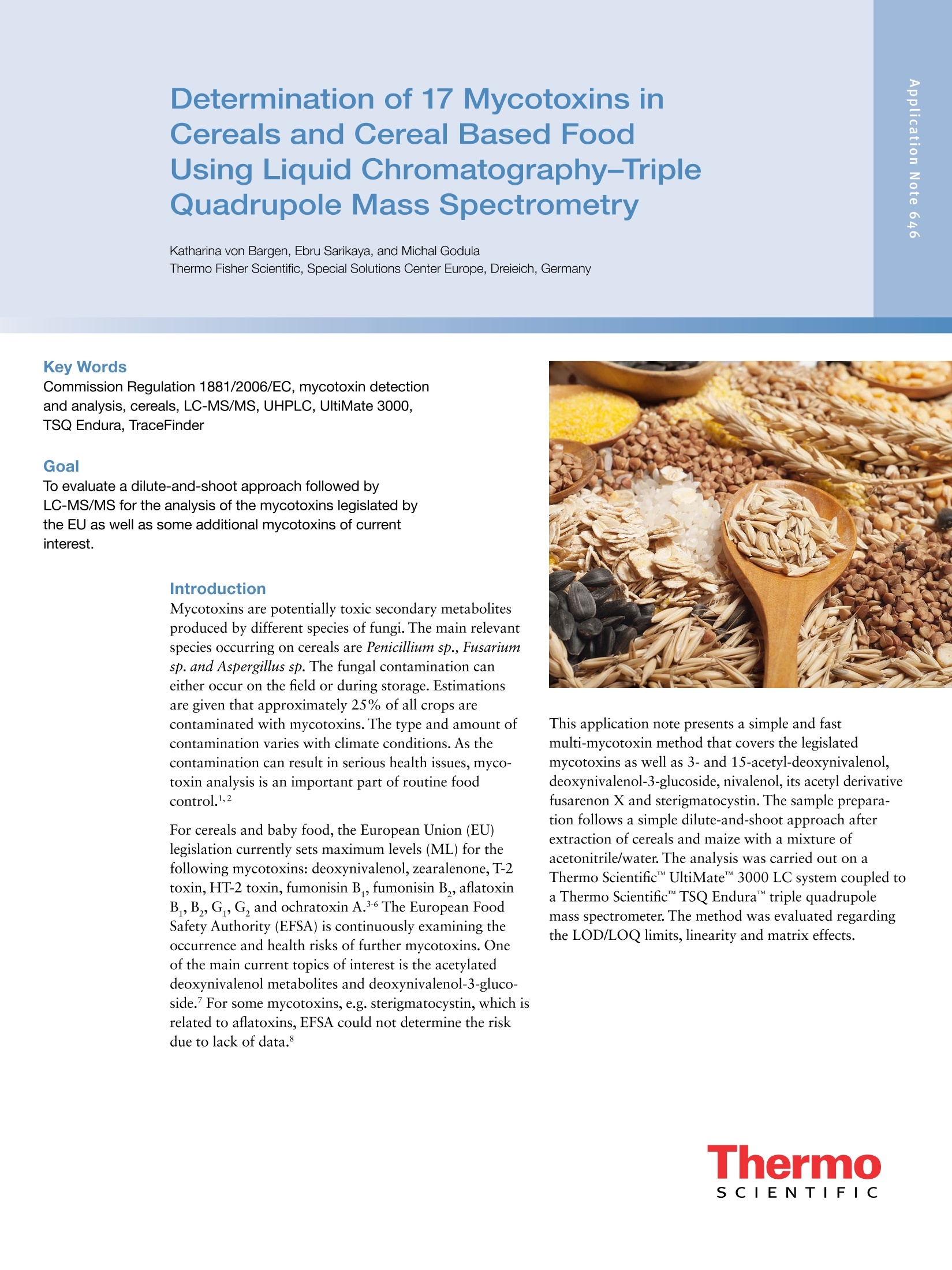
-
2/8
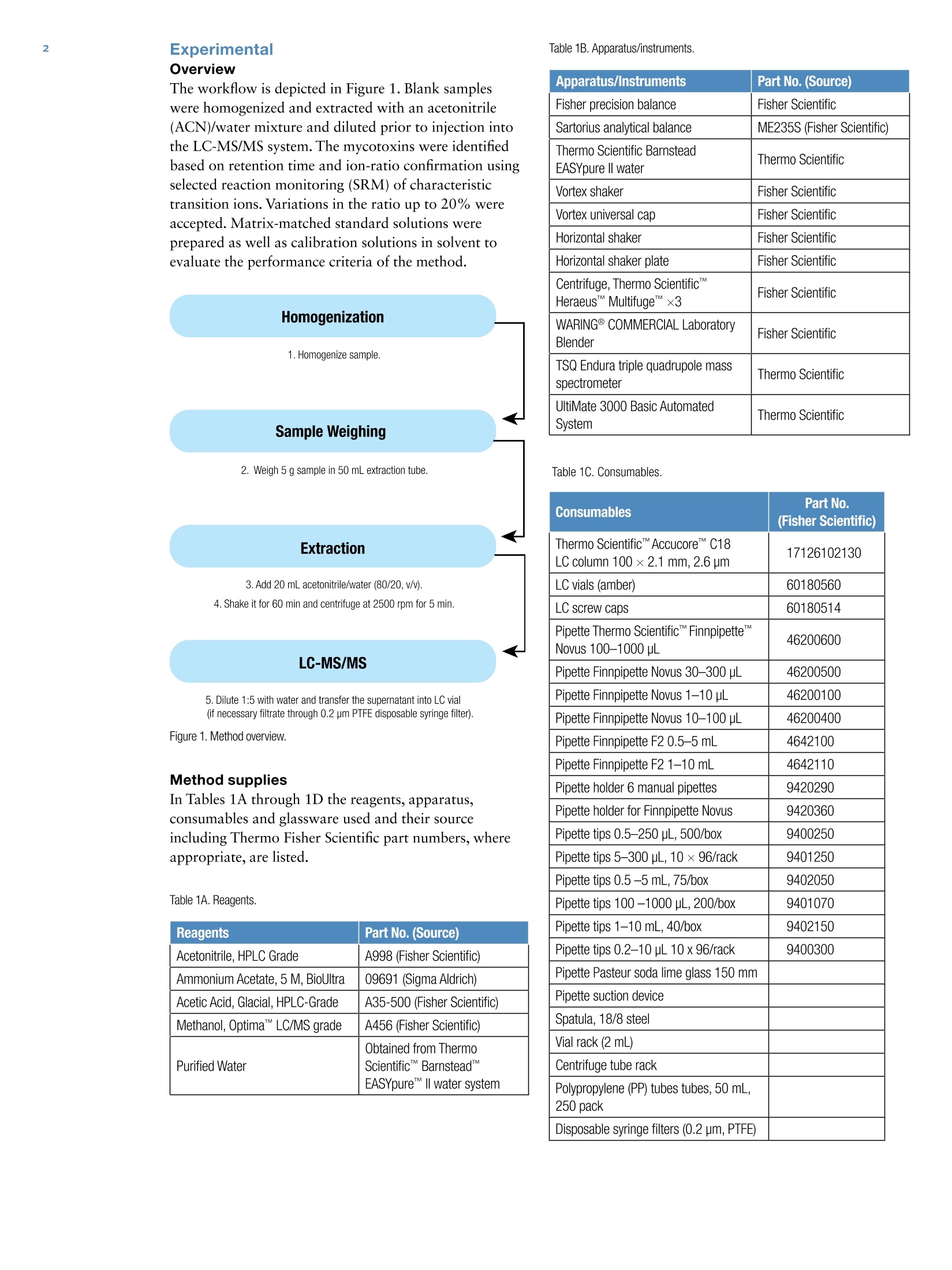
还剩6页未读,是否继续阅读?
继续免费阅读全文产品配置单
赛默飞色谱与质谱为您提供《谷类中真菌毒素检测方案(液质联用仪)》,该方案主要用于其他粮食加工品中真菌毒素检测,参考标准《暂无》,《谷类中真菌毒素检测方案(液质联用仪)》用到的仪器有赛默飞TSQ Quantis三重四极杆质谱仪。
我要纠错
推荐专场
相关方案


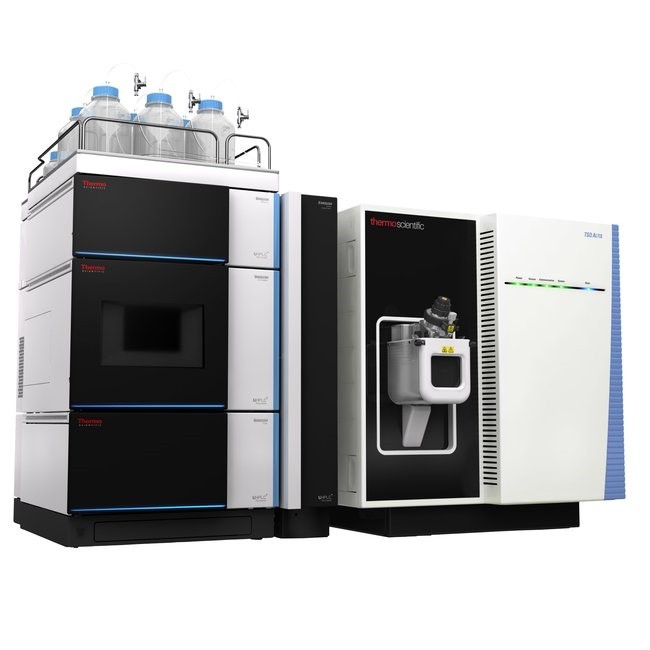
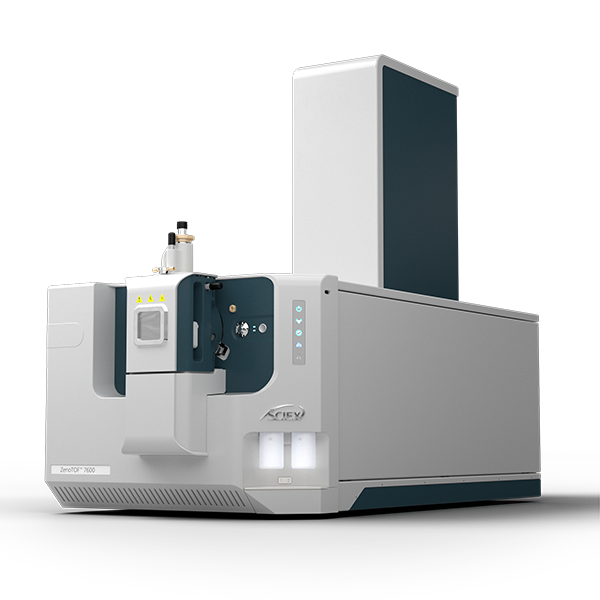
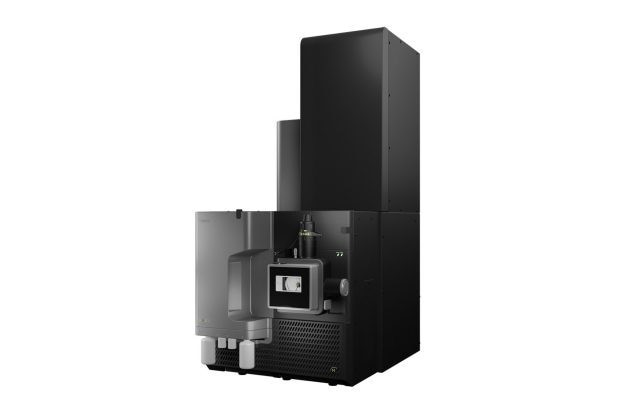

 咨询
咨询